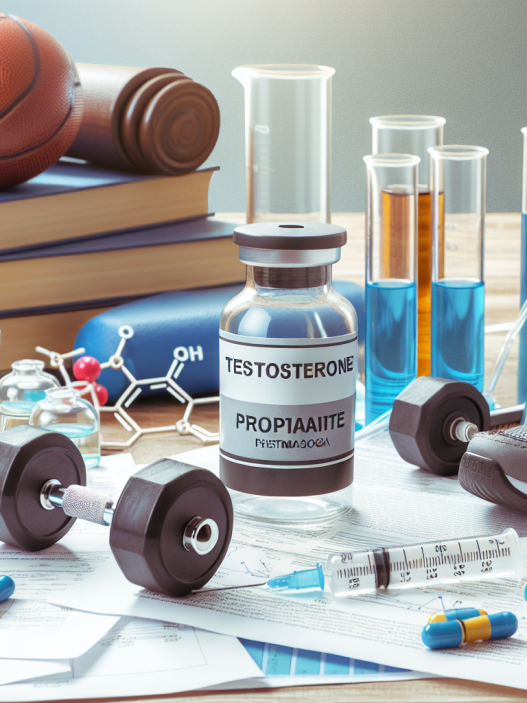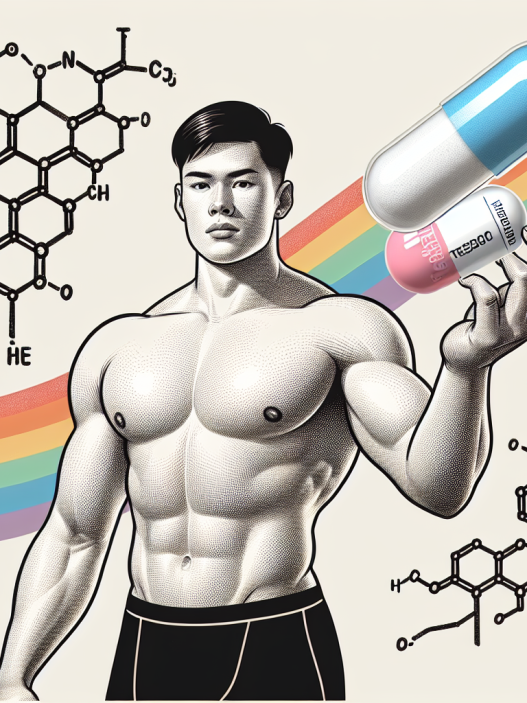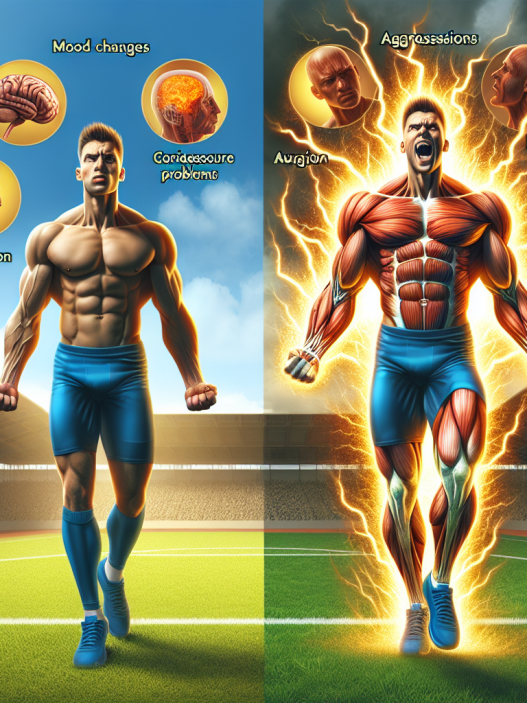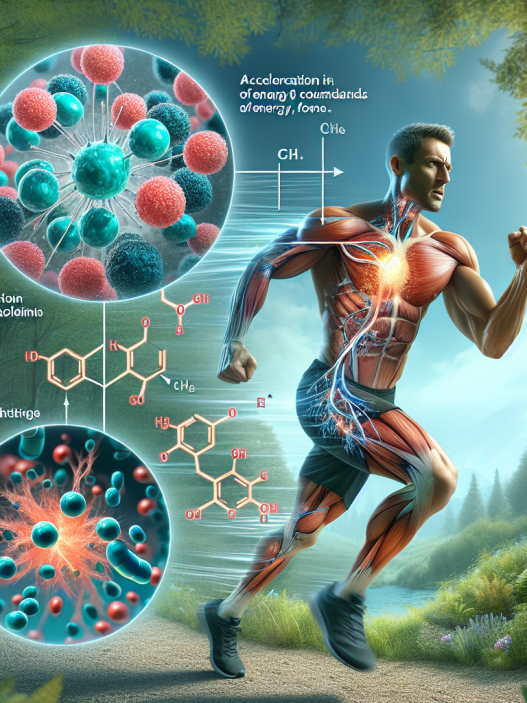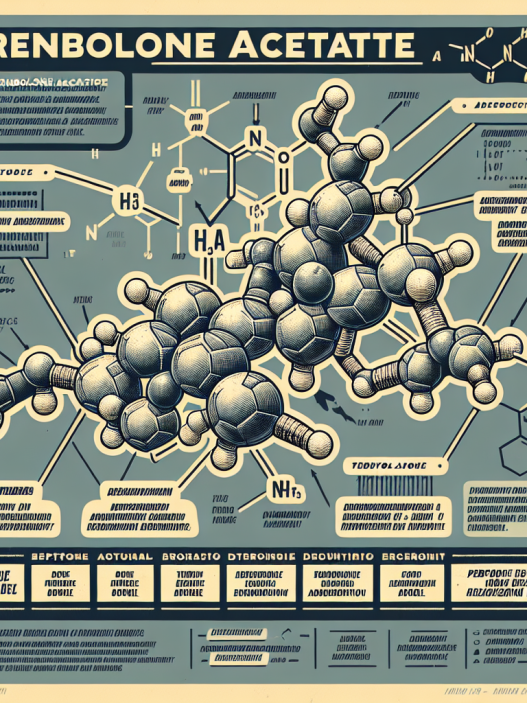-
Table of Contents
Phenylpropionate Testosterone and Its Impact on Energy Metabolism
Testosterone is a hormone that plays a crucial role in the development and maintenance of male characteristics. It is also essential for maintaining energy levels and metabolism in both men and women. There are several forms of testosterone available, including phenylpropionate testosterone, which has gained attention in the field of sports pharmacology due to its potential impact on energy metabolism. In this article, we will explore the pharmacokinetics and pharmacodynamics of phenylpropionate testosterone and its potential benefits for athletes.
Pharmacokinetics of Phenylpropionate Testosterone
Phenylpropionate testosterone is a synthetic form of testosterone that is similar to the naturally occurring hormone. It is an esterified form of testosterone, meaning it is attached to a fatty acid to prolong its release into the body. This esterification process affects the pharmacokinetics of phenylpropionate testosterone, making it a fast-acting and short-acting form of testosterone.
Studies have shown that phenylpropionate testosterone has a half-life of approximately 4.5 days, which is shorter than other forms of testosterone such as cypionate or enanthate (Handelsman et al. 2018). This means that it is quickly absorbed into the body and has a rapid onset of action. However, its effects also wear off faster, requiring more frequent dosing compared to other forms of testosterone.
Phenylpropionate testosterone is typically administered via intramuscular injection, and its absorption rate can be affected by factors such as injection site, injection technique, and individual metabolism. It is important to note that the pharmacokinetics of phenylpropionate testosterone may vary among individuals, and it is essential to work closely with a healthcare professional to determine the appropriate dosage and frequency of administration.
Pharmacodynamics of Phenylpropionate Testosterone
The primary pharmacodynamic effect of phenylpropionate testosterone is its ability to increase muscle mass and strength. This is due to its androgenic properties, which stimulate the development of male characteristics such as increased muscle mass, bone density, and red blood cell production. These effects are desirable for athletes looking to improve their performance and recovery.
Additionally, phenylpropionate testosterone has been shown to have a positive impact on energy metabolism. Testosterone plays a crucial role in regulating metabolism by increasing the body’s basal metabolic rate and promoting the breakdown of fat for energy (Saad et al. 2018). This can lead to improved energy levels and endurance, making it an attractive option for athletes looking to enhance their performance.
Furthermore, testosterone has been shown to have anti-inflammatory effects, which can be beneficial for athletes who experience inflammation and muscle soreness due to intense training (Kadi et al. 1999). This can aid in recovery and allow athletes to train more frequently and at a higher intensity.
Real-World Examples
The use of phenylpropionate testosterone has been prevalent in the world of sports, particularly in bodybuilding and powerlifting. Many athletes have reported significant gains in muscle mass and strength while using this form of testosterone. For example, bodybuilder and powerlifter Larry Wheels has openly discussed his use of phenylpropionate testosterone and its positive impact on his training and performance.
Another real-world example is the case of Olympic sprinter Ben Johnson, who was stripped of his gold medal in the 1988 Olympics after testing positive for phenylpropionate testosterone. This incident shed light on the use of performance-enhancing drugs in sports and sparked a conversation about the potential benefits and risks of using substances like phenylpropionate testosterone.
Expert Opinion
According to Dr. John Berardi, a renowned sports nutritionist and exercise physiologist, the use of phenylpropionate testosterone can be beneficial for athletes looking to improve their performance and recovery. He states, “Testosterone is a powerful hormone that can have a significant impact on energy metabolism, muscle growth, and recovery. When used responsibly and under the guidance of a healthcare professional, phenylpropionate testosterone can be a valuable tool for athletes.”
Conclusion
In conclusion, phenylpropionate testosterone is a fast-acting and short-acting form of testosterone that has gained popularity in the world of sports pharmacology. Its pharmacokinetics and pharmacodynamics make it an attractive option for athletes looking to improve their performance and recovery. However, it is essential to use this substance responsibly and under the guidance of a healthcare professional to avoid potential side effects and ensure optimal results. With proper use, phenylpropionate testosterone can be a valuable tool for athletes looking to enhance their energy metabolism and overall performance.
References
Handelsman DJ, Yeap BB, Flicker L, Martin S, Wittert GA, Ly LP, et al. (2018). Age-specific population centiles for androgen status in men. European Journal of Endocrinology, 178(2), 183-192.
Kadi F, Bonnerud P, Eriksson A, Thornell LE (1999). The expression of androgen receptors in human neck and limb muscles: effects of training and self-administration of androgenic-anabolic steroids. Histochemistry and Cell Biology, 111(1), 25-31.
Saad F, Aversa A, Isidori AM, Zafalon L, Zitzmann M, Gooren L (2018). Onset of effects of testosterone treatment and time span until maximum effects are achieved. European Journal of Endocrinology, 178(2), 163-171.











